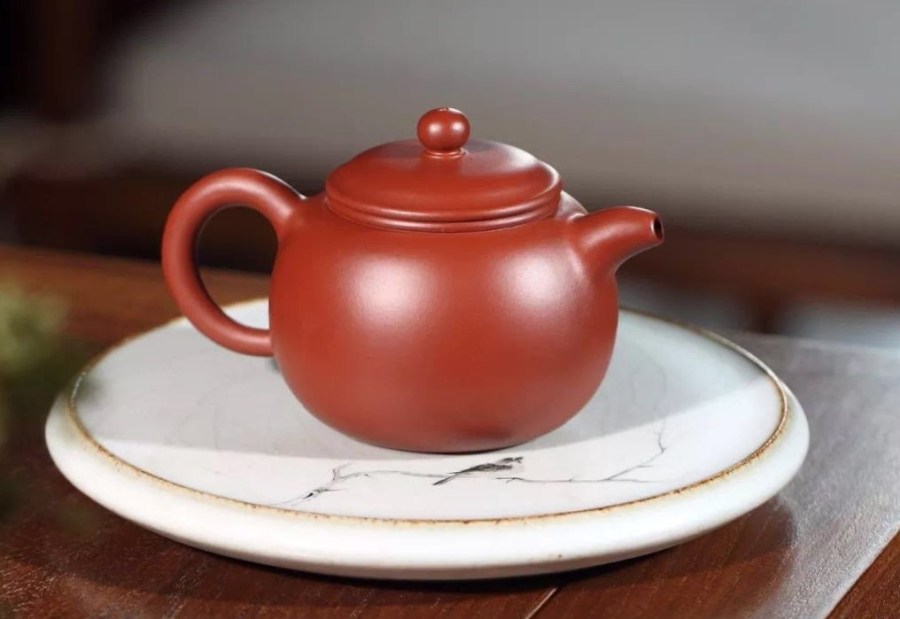As the weather gets colder during the Winter season, your clay teapot faces the risks of cracking. This may even happen to people who’re very careful with their precious teapots. If this happens to you, your first thought would be that something was wrong with the quality. However, quality isn’t often the case of cracks to appear.
Why Yixing Teapots Crack
During Winter, when the ambient temperature is low, the temperature of the teapot will also be low. If you pour boiling water directly into the teapot, it may crack. This response is due to the rapid and drastic change in temperature, resulting in thermal expansion.
How to Avoid Cracking
The key to avoid this, is to preheat your teapot. Here are some tips:
- You can pour water at 40~50°C (instead of boiling temperature) into the teapot and along the outside of it until it is filled with warm water. Note that the lid also needs to be poured over, so that the teapot would be well warmed up before brewing.
- Do not pour water of high temperatures continuously over a certain spot/area of the teapot, otherwise it would increase the uneven heating and make the teapot crack more easily.
- If you just washed the teapot with cold water, do not warm up the teapot or make tea immediately. Let the teapot rest in the room temperature to “warm up” with the environment for a while before the warming-up with water procedure.
Existing Fragile Parts or Fine Cracks

Too Thin, Insufficient Clay
If no sufficient amount of clay was used around the joints such as the handle, the spout, the button of the lid, and the bottom of the teapot, or if the potter made the layer too thin, then these parts could be quite delicate. This isn’t because the artist want to save on material, it’s because thinner teapots sometimes look just finer and artists may therefore take the risk.
Cracks during Firing
Fine cracks may also occur during the firing of the teapot, but such cracks are short, shallow and non-penetrating. Therefore, they are difficult to notice. However, these fine cracks won’t cause leaking and they won’t aggravate if you use the teapot correctly.
During the use of a teapot, small cracks can be caused by accidental bumping, and they are not easy to track down because of the deep colour of the teapot itself. These “injured” teapots are fragile and the cracks can easily become visible and get worse when exposed to severe temperature differences.
How to Avoid Cracking
- We recommend to preheat the teapot with warm water and use it with care. The thin base teapots, red clay teapots, and teapots with an uneven thickness in body (such as “Gongchun” style teapots) are more delicate.
- When you use a tea tray, avoid hard stone trays, instead go for softer trays made from bamboo wood.
Unused Yixing Teapots

If a teapot isn’t used for a long time, the body will be excessively dry. The tiny porous holes of the purple clay will dry out, and the structure will be a little friable. In such a state, if you suddenly pour boiling water into the teapot, coupled with low indoor temperature, there’s a higher chance it may crack.
How to Avoid Cracking
- Before use the teapot, first pour water of the around room temperature into the teapot till it’s half full, then add boiling to fill it up. Close the lid and gently swirl the water several times to fully moisten the teapot.
- If your teapot hasn’t been used for over a year. Then soak the entire teapot for 5 minutes in cold water first, which increases the tension of the teapot and moisten the tiny gas holes of zisha. Then, leave the teapot at room temperature for another 5 minutes, warm it up gently before infusions. If the room temperature is cold, first preheat the teapot with water at 40-50ºC.
Conclusion
Avoiding cracks of zisha teapots is not hard, there are no complicated steps required. We are sure that your favourite zisha teapot will be perfectly intact, as long as you keep in mind to warm up the teapot with moderate temperature, handle it with care, and use it regularly!
Discover more from Hello Tea Cup
Subscribe to get the latest posts sent to your email.



No Comments